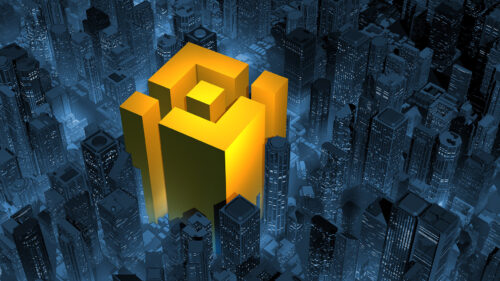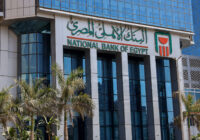We easily understand things that we can see. But some things are invisible. To understand those, we create mind models, or narratives.
Sometimes, we create mind models that, in hindsight, turn out to be completely wrong, even though they made a lot of sense at the time. The geocentric world model, for example. People looked at the sun, saw it rising in the east and setting in the west, and concluded that it must be revolving around the Earth. Later, it dawned upon humanity we got it all wrong. A new narrative emerged — the heliocentric world model. Turns out we are not the center of the universe.
Even though it is a physical thing, you cannot see the center of the solar system in the way that you can see a dog or a bowl of oranges. That is why we must model it, and why a model may sometimes go wrong. We need to marshall the evidence to make sure that our model squares with the best information we have available.
Like the center of the solar system, money and Bitcoin are physical phenomena. They describe the way that physical banks or physical computer systems actually work. Yet, they are not visible, and hence they are hard to understand without a model. I propose a mind model involving the Dutch painter Vincent van Gogh that might help.
Mind model of money
Money, being among the most important things for many, is also one of the least understood. How can mere pieces of paper, backed by nothing, be of such value? You could, for example, purchase a Boeing 747 with pieces of paper.
Things get weirder when you consider that paper money accounts for only a small fraction of the overall amount of money outstanding, estimated to be less than 1%. Most of our money exists in digital form. Bank deposits are the digital liabilities of private banks; they exceed the amount of currency (bills and coins) by a factor of 6. It would therefore be impossible to pay out all deposits in cash.
However, the model of money that we have often consists of handing over our hard-earned cash to a bank where it “works” for us, “earning” interest. Nothing could be further from the truth. Any cash held in the bank’s vault is just dead paper, doing exactly nothing.
Most of what we think of as “our money” entered the bank in digital form as a wire transfer. And most wire transfers between private banking institutions are settled by moving reserves between various accounts within the same bank, the Federal Reserve System. Before the transaction, the Fed owed money to bank “A”; now, it owes money to bank “B.” Money never left the Federal Reserve; the only thing that changed was an update within its balance sheet, or ledger.
This ledger is not much different from the Rai Stones of Yap Island — large, heavy limestones that served as a marker of who owned what amount of an agreed value. These stones did not move, but everyone remembered who they belonged to at a given time.
Our brain will meet new mind models with initial resistance, especially if they threaten long-held beliefs. “I was wrong all that time” is a hard thing to admit.
Bitcoin as a mind model of money
If fiat money is already difficult to understand, Bitcoin might be even harder. Or perhaps not! There is only a finite number of Bitcoin ever to be mined. No such limit exists in fiat money, which can seemingly be created out of thin air.
The narrative concludes that Bitcoin must be valuable since it is scarce. It must be a great store of value, and hence it must be a better form of money. Central banks cannot print Bitcoin! The government cannot devalue Bitcoin! Good money drives out bad money, and we will — eventually — transition to Bitcoin. Get educated, get on the train, or have fun staying poor!
Narratives rely on beliefs, and it should come as no surprise that followers of a certain narrative will often congregate in groups or churches. The brain finds comfort in having its narratives confirmed. We like to be surrounded by like-minded individuals. These days, passionate and often strident groups supporting Bitcoin and other cryptocurrencies have seemingly cropped up everywhere online, from Twitter to Reddit and the infamous 4Chan. They preach a gospel in which a few hundred dollars today will turn into millions, as long as you have faith and hold on to your coins.
A Bitcoin fan, or promoter (it’s hard to tell the difference) recently explained:
“If you want to be a millionaire – you can get one million Satoshis [100 million Satoshis equal 1 Bitcoin] for less than $700 at the moment. Most people will never own one whole Bitcoin in their life. Not just because it’s becoming increasingly more expensive to accumulate one. But also because there simply aren’t enough bitcoin for everyone on the planet, since only 21 million bitcoin will ever exist. There are more than enough Satoshis for everyone, though.”
Here is where Van Gogh comes in. His epic painting Starry Night is estimated to be worth about $100 million. Imagine the artwork was represented by 100 million tokens, offering fractional ownership. One Van Gogh token, let’s call it a VanGoghi, would be worth around 1 dollar. Now, everybody can afford a fraction of Starry Night.
(The example of VanGoghi is purely hypothetical, of course. But fractional ownership of art is a real thing. And, of course, there are reports of improper sales tactics. But that is not our main concern.)
Imagine someone floated the idea that VanGoghis were a new, better form of money. Supply is limited, and value should increase over time. VanGoghis would trade on electronic exchanges, and the Securities Exchange Commission might even approve some exchange traded funds investing in VanGoghis.
Would you go to a supermarket and purchase an apple for one VanGoghi? If the price was as volatile as Bitcoin, a VanGoghi could be worth as much as one dollar today, but five dollars a couple of months later. Or it might lose 87% of its value within a few hours, as recently seen in Bitcoin. The supermarket had to frequently adjust prices. The friction of buying and selling anything would increase tremendously.
Despite being (potentially) a good store of value, using VanGoghis as a means of exchange would be a terrible idea. The same applies to its use as a unit of account — imagine a corporation trying to do its accounting in VanGoghis.
Here’s why fiat money is good money
Fiat money is not a great store of value. Over long periods of time, it is terrible. Since the inception of the Federal Reserve System in 1913, the US dollar has lost around 97% of its purchasing power. Many other currencies have fared even worse.
But is this really a problem? Who uses cash as a long-term store of value? There are many options (bonds, stocks, real estate, gold to name a few) that compensate or protect from loss of purchasing power.
Fiat money has its flaws, but it has arguably allowed the creation of unprecedented wealth by enabling frictionless commerce. Yes, there is income and wealth inequality. But is that a function of our monetary system or could it be remedied with appropriate tax policy? Fewer than 2% of Bitcoin addresses control more than 90% of Bitcoin — not exactly screaming “democratization of money.”
A medium can either be a great store of value or a great means of exchange, but not both. That’s why we use fiat money for everyday business, but other options for long-term wealth preservation. A combination of the best of both worlds.
The narrative of Bitcoin, or VanGoghis, initially sounds appealing. Much less so once you lift the veil.
A common narrative of fiat money consists of the view that central banks create inflation by printing too much money. In reality, however, the private sector is responsible for approximately 95% of money creation.
In fact, money and debt are inevitably linked to each other; you cannot create money without simultaneously creating the same amount of debt. Admittedly, there is a lot of debt, meaning there is a lot of money, too. The narrative “there is too much debt” also implies “there is too much money.” Few people complain about “too much money.”
This is not to say elevated debt levels are not without problems. Money and debt are often in the hands of separate entities or people, resulting in income and wealth inequality, as well as insurmountable debt burdens for some. However, rather than laying blame at the doorstep of our monetary system, income and wealth distribution could be ameliorated by appropriate tax policies.
Fiat money is an accounting mechanism to record who owes whom. Bitcoin is nothing more than a protocol, solving the problem of users spending the same money twice in absence of a trusted central counterparty. However, fiat money is government-sanctioned (legal tender), while cryptocurrency is not.
Don’t expect governments to give up control over the definition of money without a fight. The narrative of Bitcoin being out of the reach of law enforcement is questionable. Recently, two executives from Binance, the world’s largest cryptocurrency exchange, were detained in Nigeria. The Nigerian government is demanding Binance reveal the top 100 users of Bitcoin in the country, including transaction history. Nigeria accuses Binance of undermining government efforts to stabilize its currency, the naira.
Bitcoin “mixers” like Tornado cash, used to obfuscate the origin of coins, have been banned by the US Treasury. At best, you could be holding “tainted” Bitcoin. Your wallet might then trigger compliance alerts at exchanges once you try to “off-ramp” your coins back into fiat. At worst, your account will be blocked, and your coins frozen.
It is true that, so far, nobody has managed to hack the Bitcoin blockchain. Exchanges, however, have been hacked repeatedly, or even run by malicious actors who suddenly “rug pull” their users.
The dream of “hard” money, miraculously solving all problems of society, is appealing. However, it is just a narrative that you should think about twice before adopting it.
The views expressed in this article are the author’s own and do not necessarily reflect Fair Observer’s editorial policy.
Support Fair Observer
We rely on your support for our independence, diversity and quality.
For more than 10 years, Fair Observer has been free, fair and independent. No billionaire owns us, no advertisers control us. We are a reader-supported nonprofit. Unlike many other publications, we keep our content free for readers regardless of where they live or whether they can afford to pay. We have no paywalls and no ads.
In the post-truth era of fake news, echo chambers and filter bubbles, we publish a plurality of perspectives from around the world. Anyone can publish with us, but everyone goes through a rigorous editorial process. So, you get fact-checked, well-reasoned content instead of noise.
We publish 2,500+ voices from 90+ countries. We also conduct education and training programs
on subjects ranging from digital media and journalism to writing and critical thinking. This
doesn’t come cheap. Servers, editors, trainers and web developers cost
money.
Please consider supporting us on a regular basis as a recurring donor or a
sustaining member.
Will you support FO’s journalism?
We rely on your support for our independence, diversity and quality.








Comment